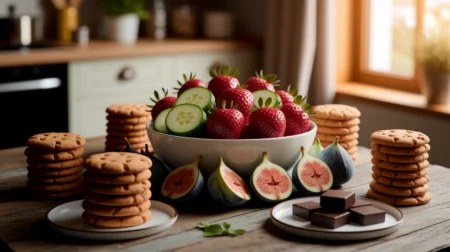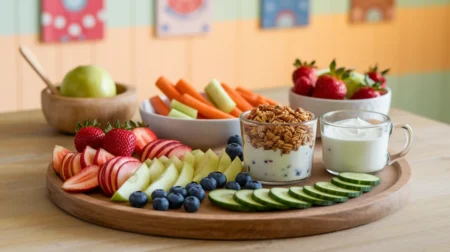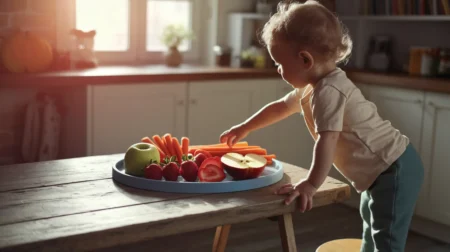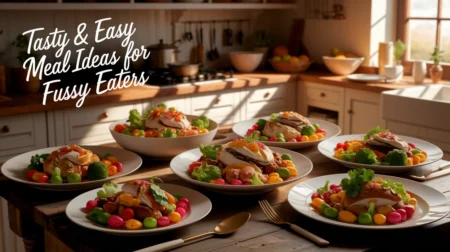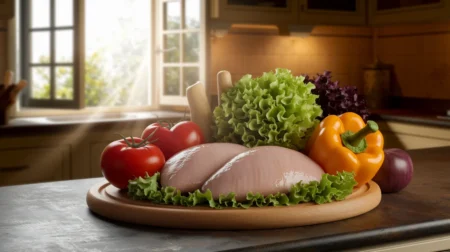bpa free lunch containers
In today’s fast-paced world, packing a nutritious lunch is key for staying healthy. But, it’s important to think about the materials in your lunch containers. Chemicals like Bisphenol A (BPA) can be harmful to your health. Luckily, there are many BPA-free lunch containers that are safe and stylish.
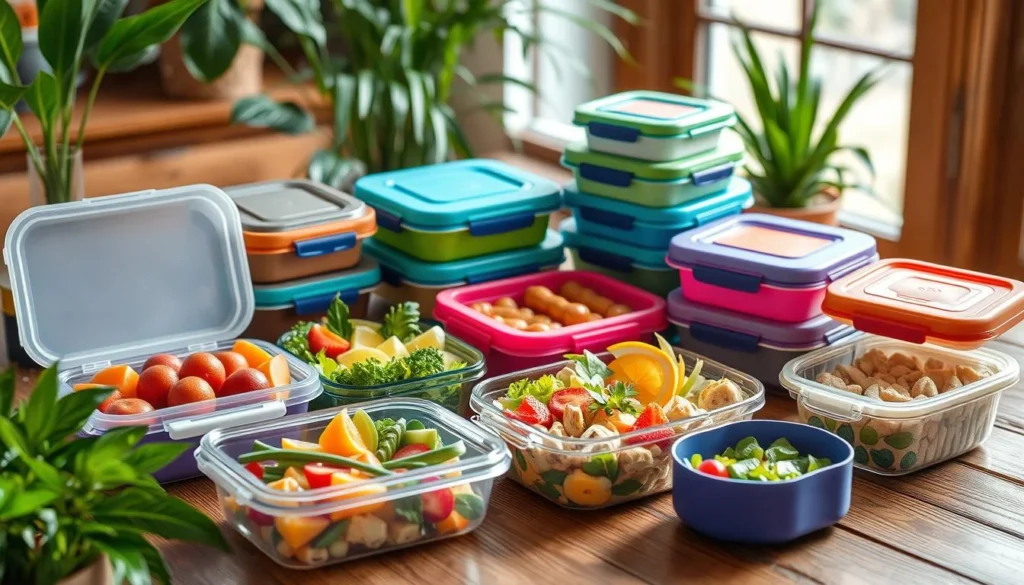
This article will cover why BPA-free lunch containers are important. You’ll learn about the dangers of BPA and find out about eco-friendly options. These alternatives focus on your health and the planet.
Key Takeaways
- BPA-free lunch containers are a safer choice than traditional plastic ones.
- Being exposed to BPA can lead to health issues like hormonal problems and developmental delays.
- When picking BPA-free lunch containers, think about the material, size, and design you need.
- Choose stylish and eco-friendly BPA-free lunch boxes for safe and sustainable meals.
- Put your health first by picking BPA-free lunch containers that are safe and easy to use.
Understanding the Dangers of BPA
Bisphenol A, or BPA, is a chemical that health experts are now watching closely. It’s found in many plastic products and has been linked to health problems. Knowing about BPA can help you choose safer products for your family.
What is BPA and Why Should You Avoid It?
BPA is a chemical used in making plastics, like food containers and water bottles. It’s been around for years, but new studies worry about its effects on our health. BPA can act like estrogen in the body, which might cause health issues.
Potential Health Risks Associated with BPA Exposure
- Hormonal disruption: Studies show BPA can lead to reproductive problems, breast cancer, and prostate cancer.
- Developmental issues: BPA during growth can cause neurological, behavioral, and developmental problems.
- Metabolic disorders: BPA is linked to obesity, type 2 diabetes, and cardiovascular disease.
- Other health concerns: Research points to immune system dysfunction, thyroid problems, and effects on the brain and nervous system.
With more evidence on BPA’s risks, it’s key to limit your exposure. Look for BPA-free options to keep your family safe.
BPA-Free Lunch Containers: A Safer Alternative
In today’s health-focused world, we pay a lot of attention to the safety and sustainability of our products. Choosing bpa free lunch containers is a smart move for your health and the planet. These products keep your food safe from harmful chemicals and help the environment.
BPA, or Bisphenol A, is a chemical used in making some plastic items, like food containers. But, studies show that BPA can harm our health, causing hormonal problems, developmental issues, and even cancer. By picking safe lunch box options without BPA, you protect your health and your family’s.
- BPA-free lunch containers use safer materials like glass, stainless steel, or BPA-free plastics. This keeps your food safe from harmful chemicals.
- These containers keep your meals fresh and tasty, making them great for eating on the go.
- Many BPA-free lunch boxes also have leak-proof and airtight seals. This stops spills and keeps your food safe inside.
Switching to bpa free lunch containers helps you stay healthy and supports a greener future. These products reduce plastic waste and lessen the harm to our environment from our daily actions.
| Feature | BPA-Free Lunch Containers | Traditional Plastic Containers |
|---|---|---|
| Safety | Made from safer materials, free from harmful chemicals | May contain BPA and other potentially hazardous substances |
| Durability | Designed to withstand frequent use and maintain their integrity | More susceptible to wear and tear, potentially leaching chemicals over time |
| Environmental Impact | Eco-friendly, often made from recycled or recyclable materials | Contribute to plastic waste and can be difficult to recycle |
Choosing bpa free lunch containers is a big step towards a healthier and greener life. It gives you peace of mind, knowing your food is safe and handled responsibly.
Factors to Consider When Selecting BPA-Free Lunch Containers
Choosing the right BPA-free lunch container is key for your health and convenience. Here are the main things to think about when picking the best one:
Materials: Plastic, Glass, or Stainless Steel?
The material of your lunch container affects its durability, safety, and how easy it is to use. Plastic containers are light and often cheaper, but make sure they are labeled as BPA-free. Glass containers are popular for being non-toxic and looking good, but they can be heavy and break easily. Stainless steel lunchboxes are the toughest choice, they don’t dent or leak, and keep your food at the right temperature.
Size and Compartments for Convenience
Think about the size and how your BPA-free lunch container is divided to fit your needs. Big containers hold full meals, while small ones are perfect for snacks or controlling how much you eat. Lunchboxes with separate parts let you keep your main dish, sides, and snacks separate for a clean lunch.
| Material | Pros | Cons |
|---|---|---|
| Plastic | Lightweight Affordable Wide variety of styles | Potential BPA concerns if not labeled BPA-free Less durable than glass or stainless steel |
| Glass | Non-toxic Sleek and modern appearance Easy to clean | Heavier than plastic More fragile |
| Stainless Steel | Extremely durable Maintains temperature well Resistant to dents and leaks | Generally more expensive than plastic or glass Heavier than other options |
Think about the material, size, and how your BPA-free lunch containers are divided to find the perfect one. This way, you can keep your meals safe, fresh, and organized all day.
Stylish and Eco-Friendly BPA-Free Lunch Box Options
Explore a variety of BPA-free lunch containers that are both stylish and eco-friendly. They focus on safety and looks, helping you make better choices for your meals every day.
The Klean Kanteen Stainless Steel Lunch Box is great for those who care about the planet. It’s made from strong stainless steel, keeping your food fresh and safe from harmful chemicals. Its sleek look makes it both useful and modern, showing off your eco-friendly side.
For those who like to mix things up, Bentgo’s Bento-style lunch boxes are a smart pick. They have different compartments that make preparing meals easy. These BPA-free lunch containers come in many colors and patterns, letting you show off your style while eating safely and conveniently.
FAQ
What is BPA and why should I avoid it?
BPA stands for Bisphenol A, a chemical in many plastic items like food containers and water bottles. It’s linked to health issues like hormone problems and reproductive issues. It’s best to pick BPA-free products to lower your exposure.
What are the potential health risks associated with BPA exposure?
Being exposed to BPA can lead to health problems. These include hormonal imbalances, reproductive issues, and developmental problems in kids. Using BPA-free products can lower your risk of these issues.
What are the benefits of using BPA-free lunch containers?
BPA-free lunch containers are safer and better for the planet. They reduce your exposure to harmful chemicals. They also offer durable and eco-friendly options for your meals.
What materials should I look for in BPA-free lunch containers?
Look for BPA-free lunch containers made from plastic, glass, or stainless steel. Each has its own benefits. Think about durability, ease of use, and what you like to choose the best one for you.
How can I find stylish and eco-friendly BPA-free lunch box options?
Many brands offer stylish and eco-friendly BPA-free lunch boxes. You can find sleek designs or colorful patterns. These lunch containers are safe, match your style, and support the environment.





